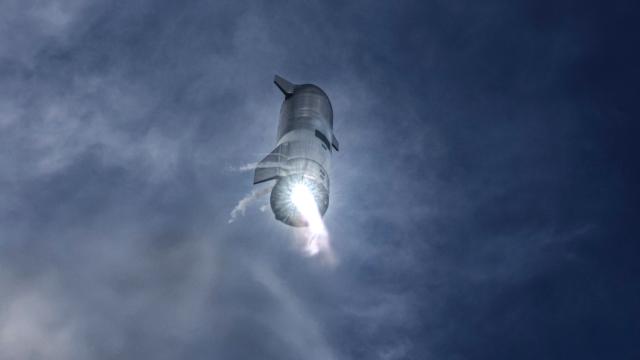All eyes will be on the Boca Chica launch facility in Texas today as SpaceX attempts its next high-altitude test of a Starship prototype rocket. You can watch the action live right here.
It goes up, it falls down, it tries to land, it explodes.
Such is the regrettable pattern that SpaceX is hoping to snap on Wednesday with the launch of SN11. The Elon Musk-led company actually managed to land its predecessor, SN10, but the rocket — listing heavily and on fire — exploded a few minutes later. The first two tests, SN8 and SN9, both ended with the rockets smashing into the ground and exploding in spectacular fireballs. (No people are on board these rockets, it should be said.)
Indeed, these tests are quickly becoming must-watch events, regardless of the outcome. The window for today’s test at the Boca Chica launch facility — or Star Base, as Musk hopes to name it someday — is now open, but no specific time for launch has been announced. You can watch the action at any one of the live feeds provided below.
A successful static fire test was conducted earlier this morning, paving the way for today’s launch.
This launch will be a repeat of the previous tests, in which the prototype ascends to a height of approximately 9.7 kilometres, followed by a belly roll, controlled aerodynamic descent, and vertical landing. Or at least, an attempted vertical landing. The rocket’s three raptor engines will shut down in sequence prior to the freefall.
All four of the prototype flaps will be controlled by an “onboard flight computer to control Starship’s attitude during flight and enable precise landing at the intended location,” according to a SpaceX statement. The engines will then “reignite as the vehicle attempts a landing flip manoeuvre immediately before touching down on the landing pad adjacent to the launch mount.”
Few details are known about the SN11 test in terms of what might be different, but as NASA Spaceflight reports, the rocket may use two engines, instead of down-selecting to one, as a “way to counter the potential loss of thrust and increase redundancy during the landing burn.” Makes sense, as two engines sound better than one, and this could represent a possible way of ending high velocity landings. Still, the calculations required to pull off a soft vertical landing must be off the charts.
[referenced id=”1678457″ url=”https://gizmodo.com.au/2021/03/elon-musk-explains-why-the-starship-sn10-prototype-exploded-after-landing/” thumb=”https://gizmodo.com.au/wp-content/uploads/2021/03/10/qkjwphyhynp0hzvmgapp-300×169.jpg” title=”Elon Musk Explains Why the Starship SN10 Prototype Exploded After Landing” excerpt=”The third high-altitude test of a SpaceX Starship prototype ended with a successful landing on March 3 — and then, moments later, ended for a second time with an explosion.”]
These tests will soon enter into a new phase. SpaceX is currently rolling out a gigantic booster rocket, which will serve as the first stage of a hybrid system known as the Starship Super Heavy. Once stacked together, the 119 metre-tall rocket will be taller than NASA’s Saturn V rocket of the Apollo era and even the agency’s upcoming Space Launch System. Tests of the big booster will commence later this year with the SN15 prototype.
